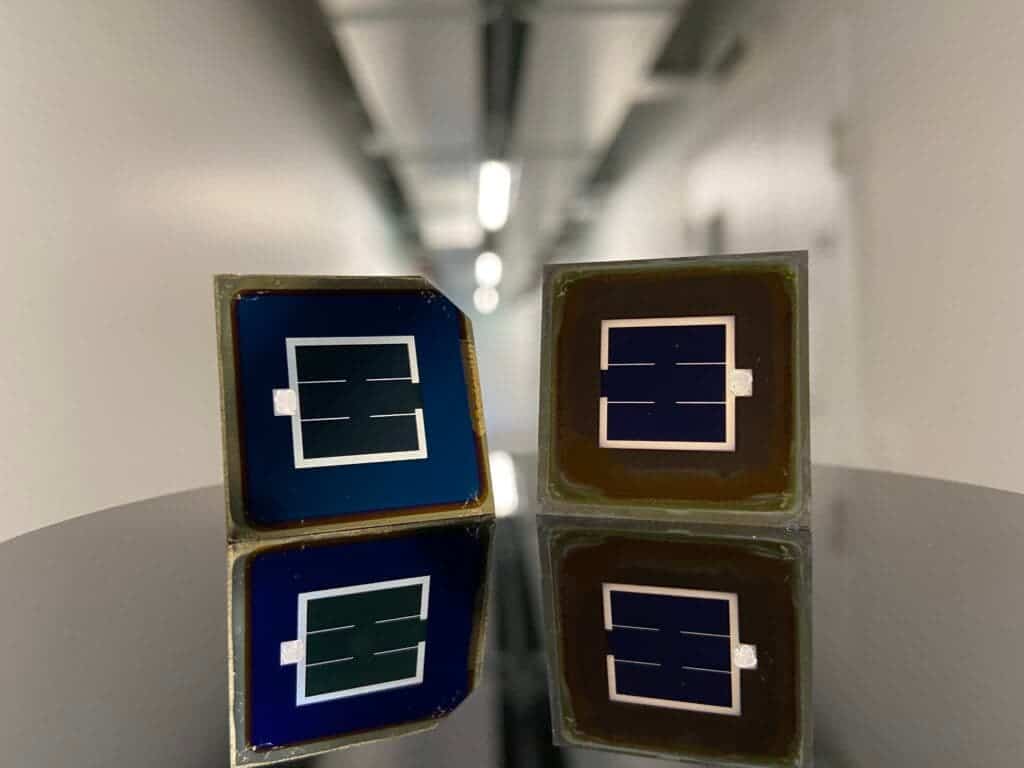Solar energy is gradually becoming the lowest-cost option for electricity generation as the world seeks to phase out polluting fossil fuels. However, scaling up solar infrastructure requires improving the efficiency of solar cells significantly. In a joint effort, scientists have now surpassed the milestone of 30% in efficiency for tandem silicon-perovskite solar cells.

Scientists at EPFL’s Photovoltaics and Thin Film Electronics Laboratory partnered up with the innovation center CSEM to explore ways to improve efficiency of solar cells. Their results were certified by the National Renewable Energy Laboratory (NREL) in the United States and could lead to much more competitive solar electricity generation.
The efficiency is the most commonly used parameter to compare the performance of solar cells. It’s defined as the ratio of energy output from the solar cell to input energy from the sun. It depends on factors such as the performance of the solar cell, the spectrum and intensity of the incident sunlight and the temperature of the solar cell.
“We have passed a psychological barrier,” Christophe Ballif, Head of the EPFL Photovoltaics Laboratory and CSEM’s Sustainable Energy Center, said in a press release. “Our results are the first to show that the 30% barrier can be overcome using low-cost materials and processes, which should open new perspectives for the future.”
Breaking a barrier
Ballif said the 30% efficiency mark had already been achieved with other types of materials. However, these are too expensive to allow an energy transition, he argued. Silicon, the material used for the study, is the most widely used material for solar cells. However, it has its drawbacks as it has a theoretical efficiency limit of about 29%.
This technology’s current efficiencies stand at about 27%, which means there’s a small margin for extra efficiency advancements. To overcome this barrier, scientists added extra solar cells to silicon, producing so-called “tandem” cells. The top cell absorbs the sun’s higher-energy visible light and the tandem cell gets the lower-energy infrared light.
The team at EPFL and CSEM improved the efficiency of tandem silicon-perovskite solar cells by using two different designs. The first one has perovskite layers deposited from a liquid solution onto a flat silicon surface, while the second one uses a hybrid vapor and liquid solution approach to deposit perovskite onto a textured silicon surface.
“Tandem perovskite-on-silicon technologies have been said to have the potential to exceed the 30% efficiency benchmark, but this is the first time this long-predicted potential has been demonstrated, which should hopefully pave the way for even cheaper sustainable electricity in the future,” Christian Wolff of EPFL said in a statement.
Solar generation is a relatively modern renewable energy source but it’s growing fast. Its capacity additions are forecast to grow 17% this year, setting a new annual record. Solar PV accounts for 60% of all renewable capacity additions. In most countries, utility-scale solar PV is the cheapest option for adding new electric capacity, especially amid rising fossil fuel prices.


